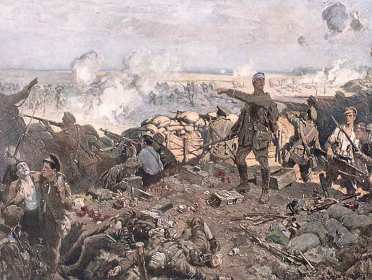Second Battle of Ypres (April 22 – May 25, 1915)

Exactly five months after they failed to capture the strategic town of Ypres in western Belgium (the First Battle of Ypres), the Germans launched a large scale gas attack. The Allied commanders at Ypres received information about the threat of an attack with poison gas but due to an earlier unsuccessful gas attack against the Russians on the Eastern front, they did not take it seriously.
When they opened the Second Battle of Ypres, the main purpose of the Germans was to distract the Allies from the Eastern front where they prepared for the Gorlice-Tarnow offensive as well as to test chlorine gas. On April 22, they released chlorine gas from 5,000 cylinders at Gravenstafel that was held by the French African Territorial troops. Thousands of soldiers were killed within minutes either due to gas poisoning or enemy fire while they were climbing out of trenches to reach fresh air. The survivors fled in panic and left a four mile gap in the Ypres salient. But the Germans, surprised by the effect of the gas failed to take advantage of the gap and breakthrough the Allied lines.
Two days later, the Germans launched another gas attack on Canadian troops at the village of Saint Julien northeast of Ypres. Again, they failed to exploit the effect of the gas and by end of April, the Allies managed to reorganize their positions. The fighting continued until May 25 when the lack of supplies and manpower forced the Germans to call off the offensive.
The Allies suffered about 70,000 casualties, while the German loses were estimated at 35,000 dead or wounded. The Second Battle of Ypres ended with status quo but it stimulated both sides to start developing more sophisticated chemical weapons.




